Simplicity Coimbatore, Gongura on the menu </a
If you are a South Indian or enjoy eating South Indian food then hearing the word ‘Gongura’ will set off the water works in the mouth for sure ! The distinctive look of that intensely dark gongura pickle and that unmistakable leafy texture is a favourite with most of the members in our family. Cooking with gongura leaves is a practice which goes back to ancient days of kitchen practices. It is also an important ingredient in most tribal cuisines.
Packing bottles of pickle is one way to ensure that a student far away from home always has curd rice as a backup meal. A bit of gongura pickle with that and they need nothing else. We take the sourcing of our gongura pickle very seriously. Having relatives who can get the best gongura pickle from their family in Telugu land is a blessing.
That’s one other thing which the lock-down has hampered; getting the yearly lot of home made pickles from Andhra.
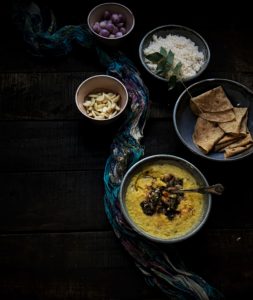
Last week during our weekly visit to the organic store, the staff mentioned that they had just then received fresh stock of pulichakeerai. In Tamil Nadu , the serrated gongura leaves are known as pulichakeerai .It is cooked with pigeon pea lentils (thuvaram paruppu),onions, garlic and green chillies and then ground together with a wooden masher. At home, we like to cook the gongura greens separately and then dollop it ceremoniously on top of the cooked dal. It looks so much more appetising and the leaves don’t get lost into the mashed up lentils. The texture of the leaves when eaten this way is more delicious, in my opinion. Each household has their own recipe for cooking the paruppu with the pulichakeerai.
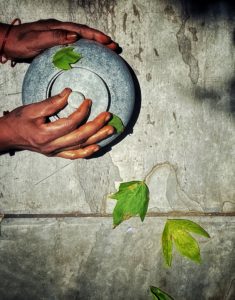
Until a couple of years ago my knowledge of keerai or native greens was limited to the varieties which are more easily available or should I say, commonly cultivated. When we began to pursue a keen interest in traditional recipes, there were so many references to a huge array of native greens. Initially I was hesitant to experiment with greens because they do tend to have extreme flavours from earthy to being herbaceous. But, I must say, that the family has been more than supportive . It has allowed me the opportunity to try out different recipes with the many native greens which are now gaining popularity.
With this recent buy of pullichakeerai we used a small quantity to make the paruppu and decided to set aside the rest. When my kitchen helper saw me cleaning the leaves, she was ecstatic at seeing fresh gongura leaves available in Coimbatore. Her traditional upbringing in a small village in Andhra has been instrumental in her developing a respect for foraged and local produce. According to her, the commercial spinach leaves have no taste ! Oh well !!!
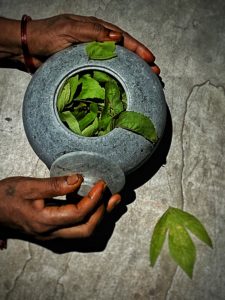
She was so eager to make the gongura pachadi (like a spicy chutney/pickle)…I couldn’t possibly say no ! Before I could pass over the bowl of leaves it was whisked away and my oh my… how her gait and demeanour changed after that ! That gongura pachadi was on it’s way to being delicious, I could tell !
It is different from the yoghurt based pachadi we make here .
While the chopping and sautéing was going on, it made me wonder why these tangy leaves had never been made into a pickle in the cuisine of these parts. Apparently the pulichakeerai or gongura does grow in most areas of South India. Maybe the scale at which it is cultivated differs but it is grown here as well.
My lady fair had something to add about that too. According to her, the cuisine here is not as spicy, oily or tangy as it is in her “ooru” (native place) so making this kind of a ‘pachadi’ is not something which will come naturally to the cooking style of Tamil Nadu.
I had to smile and say “Okay Radha”! That’s her name and she likes to think that she’s taller than me. Sigh….
It was fascinating to learn that the Gongura, also known as Roselle, other than being native to North Eastern India is indigenous to the African continent. At one point in time this ingredient was used in many different cuisines in Europe and Asia. The gongura plant goes by so many different names (both within India and abroad) , do look it up. Wikipedia states that the stems of the red variety are exported in bulk to the West and are used to make food colouring.
The usp of these leaves are undoubtedly that tangy flavour . It is different from the sour taste of lemon or tamarind and blends well with spicy ingredients. In addition to asafoetida, tamarind ,garlic and chillies, the gongura pachadi also contains roasted groundnuts. Peanuts are an ingredient which grow easily in this country and it adds a protein balance to the leaves which are rich in vitamins B6, A and C, folic acid ,iron and antioxidants.The tamarind acts as a preservative and is mainly used for that reason .
The leaves are so easy to identify because of the ivy like shape. The long thin stems are either red or green, depending on the varietal. I read that the seasonal red coloured roselle flowers are also made into a pickle…need to get more info on that !
Meanwhile the gongura pachadi turned out to be absolutely splendid and it does not take long to make at all. A helping of hot rice, a healthy plop of ghee and a generous rounded spoonful of gongura pachadi makes for a memorable lunch. Second helpings are impossible to resist with this combination.
If your gongura cravings are constant, keep a look out for the pulichakeerai at your local grocers and give the pachadi a try. The gongura pachadi feasting at home went remarkably well. The next time we buy some pulichakeerai it will be in two bunches. One just for Radha !
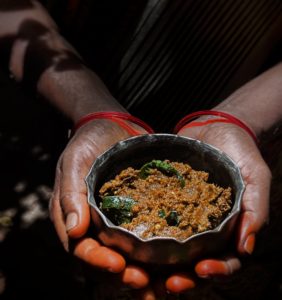

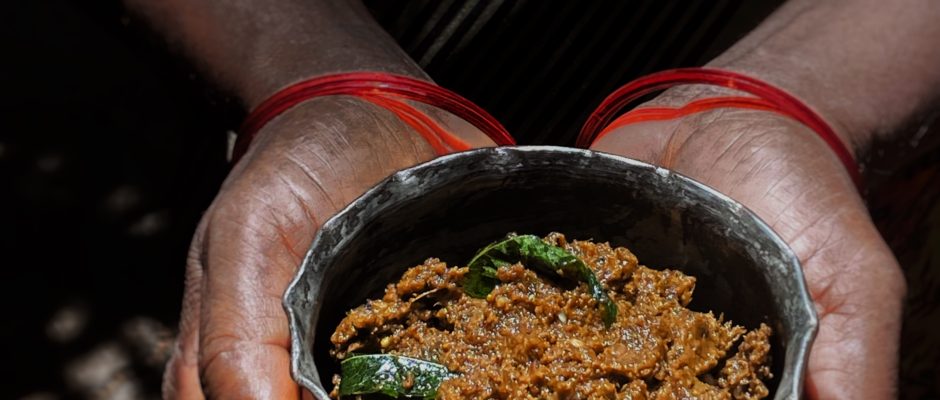
No comments yet.